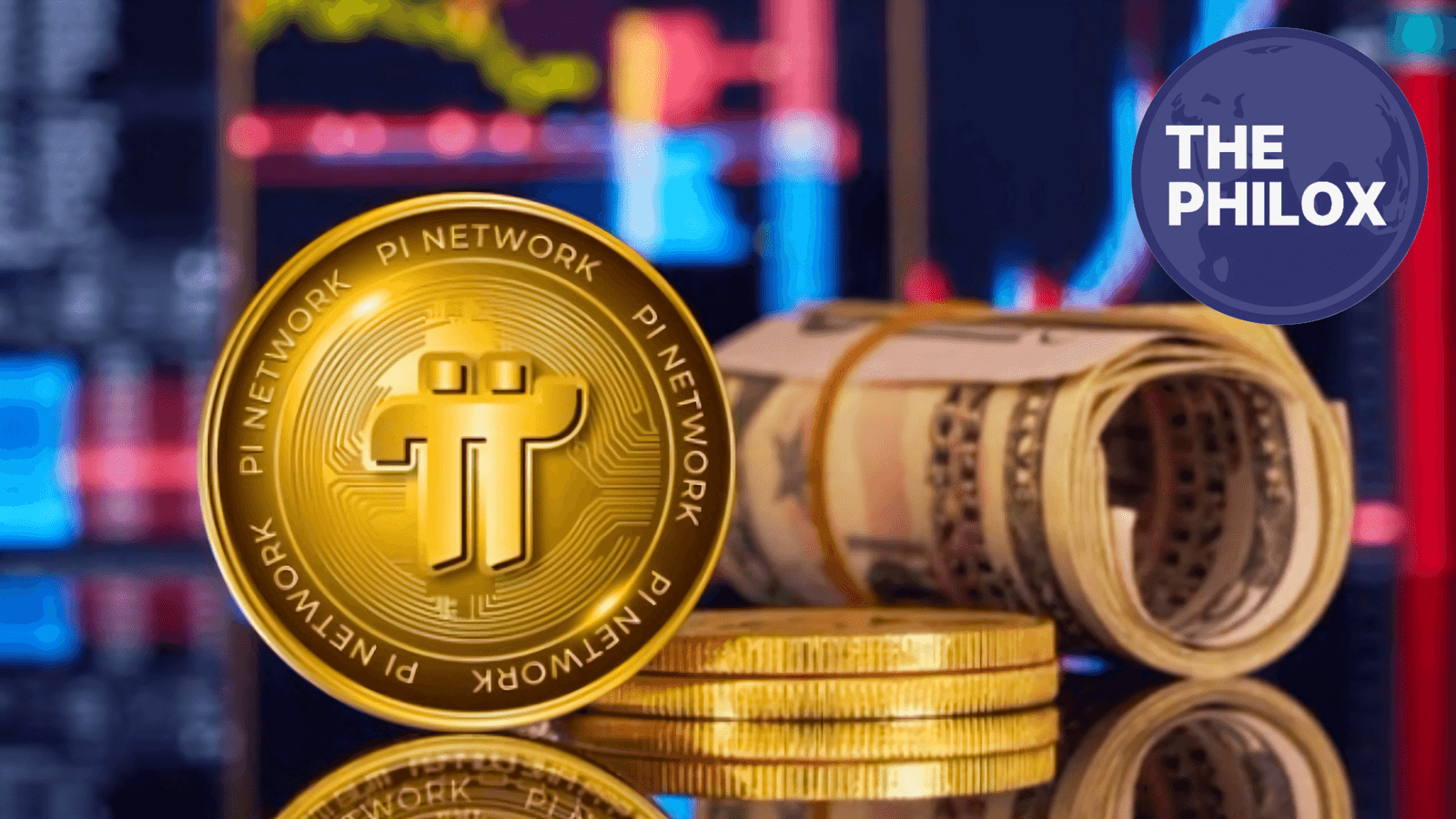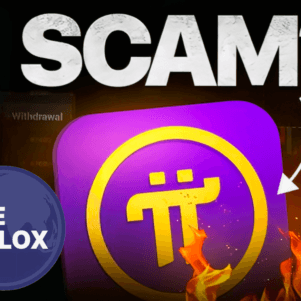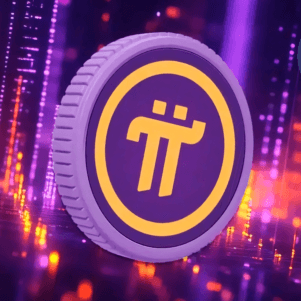Launched in 2019, Pi Network is more of a revolutionary method to mine cryptocurrencies. It is drastically different from the generic cryptocurrencies like Bitcoin and Ethereum that consume unbelievable loads of computational power and very expensive hardware to mine.
Through the Pi Network, however, users experience mobile-based mining. People are allowed to mine their Pi Coins by simply tapping the application one time per day.
This means killing the energy-guzzling rigs. In turn, it has attracted millions of users globally, who were attracted by ease and cost-free cryptocurrency mining promises.
However, despite its huge popularity, the Pi Network has come under immense scrutiny and criticism. Most experts consider this a possible cryptocurrency project, which actually serves to meet the interest of the developers themselves.
Opacity in the business model, an apparently scam-like referral system, and a supposedly non-existent mainnet in Pi Network are a few warning flags any The Pi Coin Deception Earning Through Ads While Users Mine for Nothing Disguised as Crypto
The Referral System: A Pyramid Scheme Hidden in Plain Sight?
The biggest concern about Pi Network is its very aggressive referral-based growth strategy. Bitcoin uses proof-of-work, while Ethereum is transitioning to proof-of-stake, but Pi Network uses a completely different mining model-the reason why users are incentivized to invite others to join the network.
If a new user joins the Pi Network with the help of a referral code belonging to another existing member, then both the inviter and the invitee benefit because their mining rate increases. The more people one recruits, the faster one mines Pi Coins.
This mechanism has much in common with multi-level marketing structures that are often reviled for being unsustainable.
Usually, pyramids work on the idea of rewarding people for recruiting other people rather than providing a valid product or service.
What is disturbing about Pi Network is that its value seems to come more from recruiting new users than the actual utility of the Pi Coin itself.
Since no market value for Pi Coins has been established, and they are not yet liquid outside the network in Pi Network, every aspect of the whole business is dependent on an endless stream of new signers.
If the signing rate slows down or even stops altogether, the model could implode, stranding users with nothing of actual value.
The Elusive Mainnet: Coins with Uncertain Value
A cryptocurrency has real-world value only if it can be traded on public exchanges or act as a medium of exchange.
It needs to have a functional mainnet—a blockchain network in which transactions are recorded and validated independently of the central authority that created the cryptocurrency.
Although the network has millions of users, yet there is still no operational mainnet by this token. If there is no mainnet, then Pi Coins are just locked within the Pi Network app.
That means there is no chance to withdraw such money in fiat or any other cryptocurrencies outside of the application, raising a very serious question regarding what really lies behind it.
Most of the cryptocurrency experts would say that probably the biggest red flag is a lack of a mainnet. Pi Network maintains that it is developing its blockchain, but the delay has been so long that it has already raised questions regarding whether it ever will.
Without a fully working blockchain, the Pi Coins remain worthless and only exist as the numbers on the screen within the app.
Though not as popularly known, the in-app advertisements feature is one of the most crucial features in Pi Network’s business model.
In the context of the user, they are passively mining a valuable cryptocurrency, but revenue streams come from advertisements.
This aspect means that users have to watch ads to continue mining. Thus, the attention of users is transformed into a source of revenue for developers of Pi Network.
There is nothing wrong with the concept of advertising-based revenue streams per se; however, the mechanism of setting up these models by Pi Network is problematic.
Since users must watch ads to mine, engagement metrics are artificially inflated, which may deceive advertisers concerning the actual effectiveness of the bought ad.
Much consider it more or less an ad-based business in the cloak of an actual cryptocurrency project.
If, given a proposition would only want to create decentralized and useful digital currency, then why would people monetize other users’ attention with the help of advertisements within the system?
Maybe it is a pointer to the people at Pi Network that they actually have more interest in raising ad revenues than seeing this as an operating cryptocurrency.
With every passing year, the frustration of users grows without any tangible result. Complaints fill the social media platform, especially X (formerly Twitter),
on the grounds that too much advertisement exists within the app and there is unclear information on when the Pi Coins can be traded.
Many of the initial adopters, who initially felt that the project was worthwhile, now begin questioning whether they threw away their precious time and resources.
The users start feeling scam-tized because, after all, the promise of the project is to earn profits in the future by mining Pi Coins.
Doubts are sown in the minds because the mainnet launch appears vague without a specified roadmap, and because advertisements are still more prominent than the project development.
It is also repetitive in nature since one has to keep on pushing a button every day; it creates uncertainty about the true technological advancement the project holds.
As in Bitcoin mining, it involves puzzles that are mathematical in nature, which are essentially aiming at securing the network, whereas it seems Pi Network does not serve any purpose other than keeping people engaged with the app.
Illusion of Future Value: Is Pi Coin Worth Anything?
Even if Pi Network does come out with a mainnet, the important question is: What will the value of Pi Coins be? Many cryptocurrency analysts predict the huge supply in circulation will result in massive devaluation.
Since Pi Network allowed its users to mine coins for a long, long time each day, supply of Pi Coins is already pretty inordinate, and thusly, it will flood the marketplace with billions as soon as its trade-able status gets published, which brings prices nearly into zero.
To put that into perspective, Bitcoin’s value is kept, at least in part, because there is a fixed number of 21 million BTC in the block chain. In contrast, the Pi Network does not have an established number of coins that are going to be mined, an extremely serious flaw that leads to a condition referred to as inflation.
If each person who mines Pi Coins determines to sell their coins all at once, it can drop rapidly, and therefore coins are worth very little in this case.
But more urgent, there is no sign that bigger exchanges like Binance or Coinbase would list the Pi Coins on their platforms when going live with mainnet.
This means without having exchange support, users cannot really rely on conversion of Pi Coins to real money, and therefore, dents the credibility of the project.
Should You Trust Pi Network?
The Pi Network is a revolutionary project for a new cryptocurrency. At first sight, several red flags pop out though.
There are some points as the way in which referral based recruitment seems somewhat similar to pyramiding and no functional working mainnet meaning users could realize no returns for the services or money paid while it operates completely on the backs of its users’ generated adverts.
While there are few believers who are hopeful that Pi Network will prove true to the promises, a lack of transparency, the long time and periods of delay, and the devaluation of the coin in the context all make this an extremely speculative and risky endeavor.
Users should be cautious as the time and effort put into mining may not pay off monetarily as they expect it would.
But more importantly, to the cryptocurrency world, Pi Network poses an important question: revolution or just cleverly disguised? Until it demonstrates its legitimacy in a fully working mainnet with real-world utility, skepticism is going to overcome its ambitious claims.
Stay Connected and Share Your Stories
For all those inspired by stories of resilience and ambition, follow us on X/Twitter and on Instagram . For those with untold stories that you would love to share, please send them to contact@thephilox.com









Interesting viewpoint about Pi Network. When even kids can launch new coins these days which skyrockets in value, your claim of pi network worth nothing is too far. There’s an active community for pi network and 10 million verified customers, if it really was a scam the developers of this project can make a LOT of money just releasing the coin now and holding the most of it. It certainly would be much more than meagre ad revenue. But unfortunately this is not a scam.
Thanks for your feedback sir
Your article is pathetically bad. It reels of zero research.
What $50million loss is one claiming of ??
The people of phillox clearly have very little knowledge of how crypto works and zero knowledge of Pi Network.
Did the people invest the money which you claim they lost ?? If not then whatbare you talking about ??
There is full on Blockchain that Pi works on. It’s all public. Wonder if the people at phillox even know what a Blockchain entry looks like.
Not tradable or convertible to money ??
It’s tradable morons on 10 plus exchanges and Pi network has officially verified 5 of them. Now if you have never traded crypto then that’s a completely different story as you wouldn’t know how to.
Word of advice – Go do a course in Blockchain to understand crypto better. Follow a few crypto sites like coinmarketcap and Coingecko to understand terms like marketcap etc.
And maybe then attempt an article.
Complete nincompoop article chronicling an even foolish bunch of cartoons.
Your article is pathetically bad. It reeks of zero research.
What $50million loss is one claiming of ??
The people of phillox clearly have very little knowledge of how crypto works and zero knowledge of Pi Network.
Did the people invest the money which you claim they lost ?? If not then whatbare you talking about ??
There is full on Blockchain that Pi works on. It’s all public. Wonder if the people at phillox even know what a Blockchain entry looks like.
Not tradable or convertible to money ??
It’s tradable morons on 10 plus exchanges and Pi network has officially verified 5 of them. Now if you have never traded crypto then that’s a completely different story as you wouldn’t know how to.
Word of advice – Go do a course in Blockchain to understand crypto better. Follow a few crypto sites like coinmarketcap and Coingecko to understand terms like marketcap etc.
And maybe then attempt an article.
Complete nincompoop article chronicling an even foolish bunch of cartoons.
I think you’re overlooking an important fact. No one (other than a few Pi IOU investors) are putting any money into Pi. It’s development is being totally funded by that advertising you pooh-pooh. I’m not a fan of the ads either, but at least I recognize that it serves a legitimate purpose. Also, it’s worth noting that I haven’t seen any ads at all in more than a week.
In other words, the only “risk” involved is in clicking a button in an app once every 24 hours.
How many other cryptocurrencies can claim that? I believe that number is 0.
Thanks for your feedback sir
thanks for your feedback appreciated
To be honest i am very confused ablut this pi network ,i tried my best to understand is it legit or not but i am still confused ,and very sad too,a network running form last 5 years and with this much users and no crypto word well established organizations ever tried to look at it and try to found out is it legit or just making people fool if there is i didn’t found yet ,there are very less information about it ,or in othe words a very concrete information which make us decide is it legit or not and specially for person like me who got very few knowledge about cryptocurrencies ,now it just a frustrating thing for me to decide whether i should leave this or carry on with this project ,i think someone from the crypto word need to do background research on it before it becomes a major disaster for a lot of persons (as some of are using it instead of money )
Ads can be turned off; they are optional. Most miners have locked their Pi coins for 1–3 years. 27,000 businesses have indicated that they will accept Pi as a payment method after its launch (and it is already usable in many places). Although progress is slow, the company is moving in the right direction. Supposedly—though I haven’t found an official announcement—137 Ventures and two other companies have invested $15 billion in the project.
Your article is pathetically bad. It reeks of zero research.
What $50million loss is one claiming of ??
The people of phillox clearly have very little knowledge of how crypto works and zero knowledge of Pi Network.
Did the people invest the money which you claim they lost ?? If not then whatbare you talking about ??
There is full on Blockchain that Pi works on. It’s all public. Wonder if the people at phillox even know what a Blockchain entry looks like.
Not tradable or convertible to money ??
It’s tradable morons on 10 plus exchanges and Pi network has officially verified 5 of them. Now if you have never traded crypto then that’s a completely different story as you wouldn’t know how to.
Word of advice – Go do a course in Blockchain to understand crypto better. Follow a few crypto sites like coinmarketcap and Coingecko to understand terms like marketcap etc.
And maybe then attempt an article.
Complete nincompoop article chronicling an even foolish bunch of cartoons.